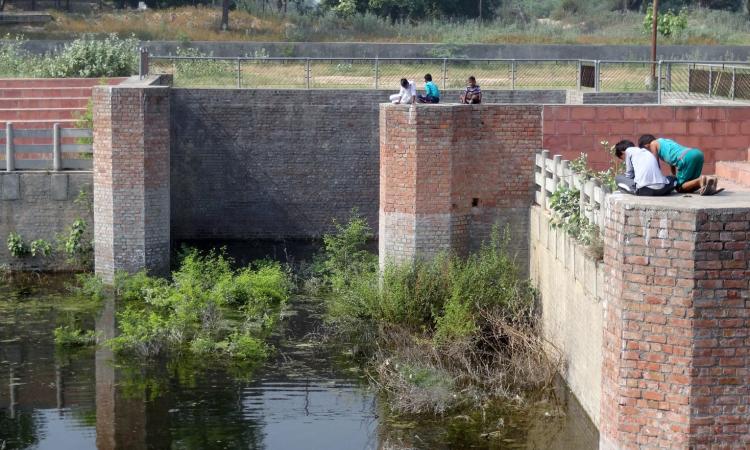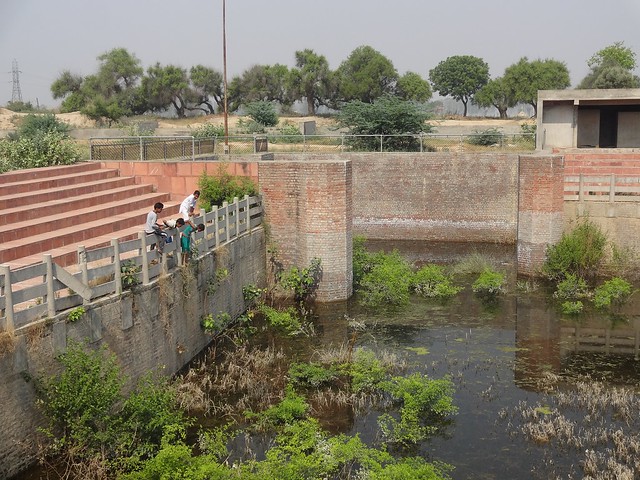
I was in Rasina, my ancestral village. It was a solemn occasion - the death of my eldest paternal uncle, and it was only the second death in our extended family after almost 18 years of my grandfather’s passing. A lot has changed in the village over time thanks to its premier location on the busy Karnal-Kaithal highway. Where once white bread was a rarity, carts selling burgers and even chowmein abound now, and like all spots that are perfect stopovers for tourists, it has ATMs, petrol stations and eateries. As alluring as all this might be, it pales to what the village was once famous for.
Rasina falls in the Kurukshetra region, the famous arena encompassing 48 kos (86.4 km) where the epic battle of the Mahabharat was fought. At the northern end of the village lies Rinmochan Tirath, a pond dating back to those times. A dip in its waters is believed to relieve one from all debts debts mentioned in the Hindu scriptures and help one attain moksha (‘Rin’ means debt, ‘Mochan’ means reliever). The tirath (holy place), which finds a mention in the Vaman Purana, Brahma Purana and Matsya Purana, is one of the 67 such places in the Kurukshetra area.
The renovation of legends
Rinmochan had its moment of glory at the turn of the century when two idols of Lord Vishnu and the remains of a temple dating back to 9th century AD were found at its base. The discovery further added to its stature as a place of historical importance. It was the desire to further popularise Rinmochan as a pilgrimage place that led the Kurukshetra Development Board to sanction Rs 1 crore for its renovation in 2008. As I returned to the pond after so many years for performing last rites of my uncle, the impact of the developmental effort was evident. What I remembered was a far cry from what I now saw. 
My memory of it was evenings spent during summer holidays. Being far from habitation, it had an ambience which suited the legends associated with it. Beautiful Dhak (flame of the forest) and Jhal (oleoides) trees surrounded the pond providing much relief from the intense heat. My cousin, Satish, adept at the ways of village life and tradition of oral history, would narrate tales about sightings of the immortal Ashwathama at its ghats with blood trickling down his forehead, from where Lord Krishna had removed his gem as punishment. We would go scouting for more mysteries to an old temple on its banks, which had a dug well of hypnotising depth and alleys echoing with sounds of birds. The villagers used the pond mainly for relgious ceremonies including the bathing ritual at its ghat after cremating their loved ones at the adjacent ground.
Now, the oval-shaped natural water body is reduced to a smaller squarish tank dug over 15-feet deep. Gone are the trees on its banks. Tall poles, now tarnished by rust stand balancing large floodlights on their heads. A row of changing rooms on the western side has been left half constructed. Steps have been built on three sides with a 4-feet high concrete fence separating it from the pond. There are no stairs going down to the water. In fact, the pond does not hold water most of the time. Occasionally, the tubewell sunk on its periphery throws in groundwater which is good enough only to sprout wild growth.
Insulated from people and surroundings
A day after my uncle's cremation, a peculiar issue arose as we returned to collect the mortal remains of the departed. One who dies in the holy land of Kurukshetra is said to be blessed as the progression of the person’s soul is believed to be quick. The mortal remains are not taken to Haridwar for immersion in the Ganga but offered to the nearby tirath. At Rasina, they bury them at the base of Rinmochan but as there was no access to the main body, Satish had to climb down the wall holding his father's remains in one hand and tugging at a long cloth tied to the fence with another. The water was just high enough to cover his feet. He hurried with the ritual and climbed back up.
Access to the pond was restricted in the new design. A former Panchayat member said that this had been done because it was proposed that the main body would fill up to the brim and water would reach the steps where people could sit and take a bath. The fence was built to ensure safety. But in all these years, the pond has never got enough water and it isn't difficult to see why. The base runs very deep and the concrete periphery cuts off the pond from its catchment area, leaving the tubewell as the only inlet. Whatever rain falls directly in pond is the only water that it gets, which is never enough. In fact, according to the renovation plan, the entire surrounding area is to be tiled which will further restrict any chance of water naturally flowing into the pond.
Community reactions to the transformation
As bothered I was, I asked around to see if others in the village were really concerned by this transformation of a natural water body into a dry tank with no access point whatsoever. Mixed responses is all I got. Some rue that it was a better place earlier not only because of the natural surroundings but also because it was easy to access the water. However, many feel that the construction work has lent Rinmochan a character distinguishing it from a standard village pond. They would like it to be seen in the same league as Brahma Sarovar and Sannihit Sarovar of nearby Thanesar where thousands of pilgrims congregate for a dip on auspicious occasions. “There’s no water in Rinmochan but I am sure once more grant money comes in, we can see some improvement,” says Rajinder Sharma.
The Janmashtami fair, another high point of the pond from earlier days, is still organised every year but no pilgrims from other areas visit despite all the money that has been spent on it. In fact, the pond has become an impersonal spectator to human life rather than a benevolent host to devotees seeking salvation in its waters. The shrine nearby stands renovated as well with tiles decorating its entrance.
Not much is said about Ashwathama now but I wonder what he would think of us if he did come wandering to Rinmochan again.
View more pictures of Rinmochan.
/articles/renovation-insulates-pond-its-devotees